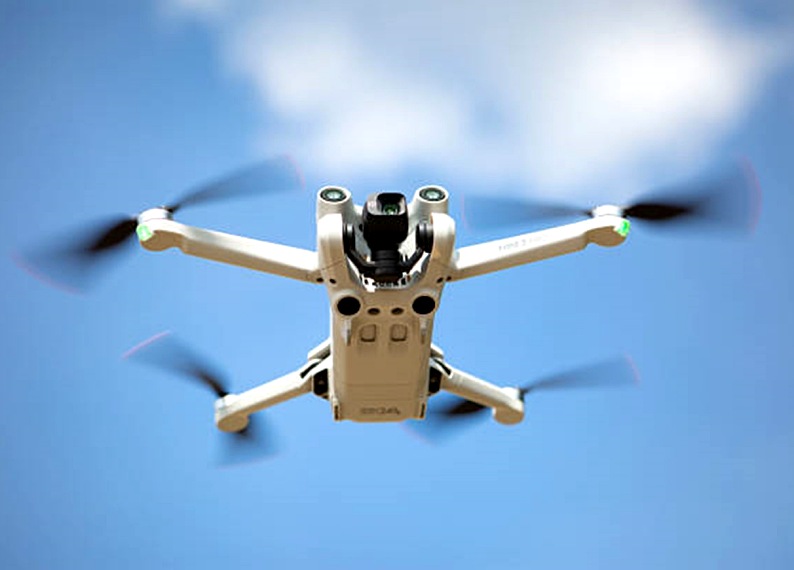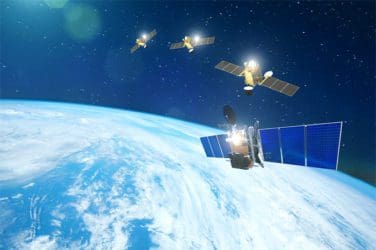words Al Woods

In recent years, the use of drones has grown rapidly, with applications ranging from recreational use to military and commercial purposes. With the advancement of technology, drones are now capable of performing complex tasks and operating for longer periods. However, one of the limitations of drones has been their range, which has hindered their ability to reach distant locations or cover large areas efficiently.
This is where long-range drones come in, offering a revolutionary solution to the limitations of conventional drones. Long-range drones can travel much farther and stay in the air for extended periods, opening up a whole new world of possibilities for aerial technology.
In this article, we will explore the potential of long-range drones and how they are transforming various industries, from agriculture to emergency services, and beyond.
The Advantages of Long-Range Drones
Extended Range and Flight Time: Long-range drones are capable of flying much farther and staying in the air for extended periods compared to conventional drones. This means they can cover larger areas, reach remote locations, and perform complex tasks without the need for frequent battery changes or recharging. As a result, long-range drones are ideal for applications such as mapping, surveying, and monitoring where a wider coverage area is required.
Improved Safety and Efficiency: Long-range drones are equipped with advanced safety features such as obstacle avoidance sensors, GPS tracking, and real-time flight monitoring. These features improve flight safety and reduce the risk of accidents or crashes, especially when operating in remote or hazardous environments. Additionally, long-range drones are designed to operate autonomously, reducing the need for human intervention and improving operational efficiency.
Greater Payload Capacity: Long-range drones have a higher payload capacity, allowing them to carry heavier payloads such as cameras, sensors, and other equipment. This makes them suitable for a wide range of applications such as aerial photography, surveying, and delivery services.
Enhanced Data Gathering Capabilities: Long-range drones are equipped with advanced sensors and cameras that can capture high-quality images and data from a distance. This enables them to perform tasks such as environmental monitoring, crop analysis, and wildlife tracking with greater accuracy and precision. This enables them to perform tasks such as aerial survey, environmental monitoring, crop analysis, and wildlife tracking with greater accuracy and precision.
Increased Flexibility and Versatility: Long-range drones are highly versatile and can be customized to suit various applications. They can be equipped with different types of sensors, cameras, and other equipment, making them suitable for a wide range of industries such as agriculture, emergency services, and infrastructure inspection. Additionally, they can be operated remotely from a control center, making them ideal for applications where human intervention is not practical or safe.
Applications of Long-Range Drones
Agriculture
Crop Monitoring and Analysis: Long-range drones equipped with high-resolution cameras and advanced imaging technology can be used to monitor crops and analyze their health. This can help farmers identify areas of their fields that require more attention and optimize their use of resources like water, fertilizer, and pesticides. The data collected by the drones can also be used to create detailed maps of crop yields, which can inform future planting decisions.
Precision Agriculture and Crop Spraying: Long-range drones can be equipped with specialized equipment for precision agriculture, including seed planting and crop spraying. By using drones for these tasks, farmers can reduce the use of chemicals and minimize soil compaction by avoiding heavy equipment on their fields. This can help increase crop yields while reducing environmental impact.
Livestock Monitoring: Long-range drones can be used to monitor livestock herds, providing farmers with real-time data on their animals’ health, location, and behavior. This can help farmers identify potential health problems early and prevent the spread of disease.
Emergency Services
Search and Rescue Operations: Long-range drones can be used to search for missing persons, particularly in remote or difficult-to-reach areas. Equipped with thermal imaging cameras and other sensors, drones can quickly cover large areas of terrain and provide rescuers with valuable information.
Firefighting and Disaster Response: Long-range drones can be used to assist in firefighting and disaster response efforts. Equipped with cameras and sensors, drones can provide real-time information on the spread of fires or the extent of damage from a natural disaster.
Medical Transport and Delivery: Drones with long-range capabilities can be utilized for the transportation of medical equipment and supplies to areas that are remote or difficult to access. During emergency situations, they can be utilized to deliver essential medical supplies such as vaccines and blood in a fast and efficient manner.
Environmental Monitoring
Forest and Wildlife Management: Long-range drones can be used to monitor forests and wildlife populations. By using drones to collect data on the health of forests and wildlife populations, conservationists can identify areas in need of protection and develop more effective conservation strategies.
Ocean and Marine Life Monitoring: Long-range drones can be used to monitor ocean and marine life. By using drones to collect data on the health of ocean ecosystems and marine life, conservationists can identify areas in need of protection and develop more effective conservation strategies.
Air Quality Monitoring: Long-range drones can be used to monitor air quality in urban and rural areas. Equipped with sensors, drones can collect data on air pollution levels and help identify sources of pollution.
Infrastructure Inspection
Power Line and Pipeline Inspection: Long-range drones can be used to inspect power lines and pipelines, particularly in remote or hard-to-reach areas. By using drones for inspections, utility companies can reduce the risk of accidents and improve the efficiency of their maintenance efforts.
Bridge and Building Inspection: Long-range drones can be used to inspect bridges and buildings, particularly in areas that are difficult or dangerous for humans to access. By using drones for inspections, engineers can identify potential problems early and develop more effective maintenance plans.
Construction Site Monitoring: Long-range drones can be used to monitor construction sites, providing builders with real-time data on the progress of their projects. Drones can be used to survey construction sites, monitor worker safety, and provide managers with valuable information on the status of their projects.
Delivery Services
Parcel Delivery: Long-range drones can be used to deliver packages and parcels quickly and efficiently, particularly in areas that are difficult or time-consuming to access by traditional means of transportation.
Food and Beverage Delivery: Long-range drones can be used to deliver food and beverages quickly and efficiently, particularly in areas that are difficult or time-consuming to access by traditional means of transportation.
Challenges and Future of Long-Range Drones
Regulatory and Legal Issues: One of the major challenges facing the use of long-range drones is the regulatory and legal framework governing their operation. Governments around the world are grappling with issues such as safety standards, privacy concerns, and airspace regulations.
Technological Challenges: The development of long-range drones presents a number of technological challenges that must be overcome to ensure their safety and reliability.
Battery Life and Charging Time: Long-range drones require high-capacity batteries that can provide enough power to cover long distances. Improving battery life and reducing charging times will be key to the future development of long-range drones.
Navigation and Communication Systems: Long-range drones need reliable navigation and communication systems to operate safely and effectively. This includes the use of GPS technology, as well as advanced communication systems that can transmit data over long distances.
Weather and Environmental Factors: Long-range drones must be able to operate in a variety of weather and environmental conditions. This includes dealing with strong winds, rain, and snow, as well as operating in remote and challenging terrain.
Security and Privacy Concerns: Long-range drones present a number of security and privacy concerns that must be addressed to ensure their safe and responsible use.
When it comes to remote-controlled drones, it is important to ensure that proper security protocols are in place to prevent unauthorized access to the drone’s control system and protect the privacy of any data collected during its operation.
Opportunities for Advancement: Despite the challenges, the future of long-range drones is bright, with significant opportunities for advancement in a number of areas.
Artificial Intelligence and Machine Learning: Advances in artificial intelligence and machine learning technology will enable long-range drones to operate more autonomously and efficiently, making them more effective in a variety of applications.
Blockchain and Cryptography: The use of blockchain and cryptography technologies will help improve the security and privacy of long-range drone operations, enabling them to be used in a wider range of applications.
5G Networks and IoT Integration: The development of 5G networks and the integration of long-range drones with the Internet of Things (IoT) will enable them to operate more effectively and efficiently, improving their safety and reliability.








